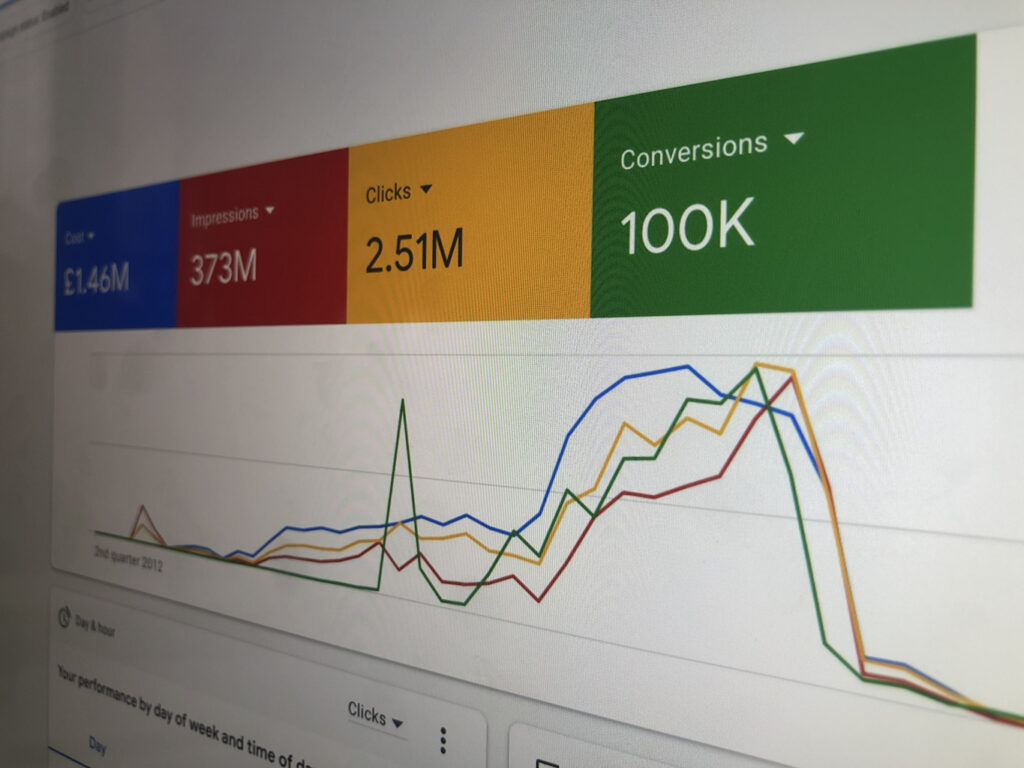What are the key metrics to consider when reporting on data for a B2B client? That totally depends on what you are optimising and tracking, but below are some we strongly suggest keeping an eye on — some nice little nuggets of gold to ensure your optimising is as effective as possible.
While it is important to look at your performance at the audience level to see overall results, it is equally key to look at specific creatives to truly understand what your audiences are resonating with. Understanding the types of creatives and copy your audiences respond to will help you better develop and optimise performance so you can maximise your media spend.
When it comes to B2B paid media, if the main goal is to drive leads and market quality leads (MQLs), the sales cycle will take a long time, and initially, you may not know if your campaign is driving MQLs. There can be a long turnaround, but this is normal in B2B.
Keep this in mind when running campaigns: if you are generating a low number of leads and a high cost per lead, it’s imperative to remember that while yes, this lead is expensive, if it turns out to be an MQL, the overall lifetime value will more than likely justify that outcome.
CTR & CVR
It’s important to understand which creatives are helping you drive these MQLs or leads in general.
Metrics such as CTR and CVR play an important part in understanding what’s working. For example, if you’re running a paid LinkedIn ad optimising for leads from forms on your website, and you see a high CTR but a low CVR (lead form completion rate), this implies that while your audience is resonating with your content, there may be a disconnect between the creative and the landing page. Because of this, there are optimisations you can take to improve results, such as updating the landing page.
Consider using tools like Hotjar as well — a tool that allows you to clearly see where audiences are mostly interacting with your website using heatmaps. This can help optimise and improve landing page layout, which will continue to improve overall campaign performance. For example, if the form is currently at the bottom of the page, you should consider moving it to the top.
In other cases, you may have opted to use LinkedIn’s in-platform forms. In this case, you will want to check how many lead form opens you are getting. If it’s low, are you asking too many questions in the form? Optimise forms to auto-fill where possible, but understand that this may drive lower quality leads due to the quick completion of the form.
Seeing how much traffic the campaign drives to the business landing page will greatly help you understand whether you are reaching the right businesses and if your messaging is properly tailored.
CPM
CPM is a key metric to look at as well. If CPMs are high, this can impact results and is a key metric to review before making any optimisations to the campaign. For example, if native performance is underperforming versus last year despite targeting and media spend staying relatively the same, have a look at your CPM (cost per 1000 impressions). This will likely be directly impacting results as it’s costing you more to get in front of the same number of people. This can be due to added competition in the platform and inflation.
CAC & CLTV
We briefly covered this earlier, but understanding the true Customer Acquisition Cost (CAC) is key as well. Knowing the value of an MQL is an important part of determining whether your campaigns are optimised as effectively as possible. It is crucial for marketers to have a clear understanding from the sales team on this to drive performance forward.
In addition, understanding the Customer Lifetime Value (CLTV) will also help. In the interim or initial stages, CAC may not seem valuable, but if the business has repeat clients with a bigger scope of work, it will justify the cost. It is essential to look at a longer time frame when it comes to B2B marketing.
Lead Quality Score (LQS)
Lead quality score can be another way to determine whether your campaigns are doing well. While this is not a common metric, if you’re seeing a high number of leads, it may be worth looking at lead scoring. As a marketer, having an overview of this is key to understanding if you are targeting the right audiences and not negatively impacting results. If it turns out all of these leads you have brought in are from the wrong companies or types, or don’t fit with business objectives, you should update the targeting to ensure it does not impact metrics for too long. This is where using ABM lists can help — having a tailored business list you want to get in front of.
Creative & Frequency
While we have outlined that creative plays a key part, another metric to consider is frequency. If you are seeing high frequency levels with your ads, you will want to update these as audiences are probably getting fed up of seeing the same creative repeatedly. In addition to this, if you have a high frequency but low CVR, this is a key indicator showing that your creatives are not resonating as you expect, so you should update them.
If you want help running your paid media, why not get in contact? We would love to chat.



